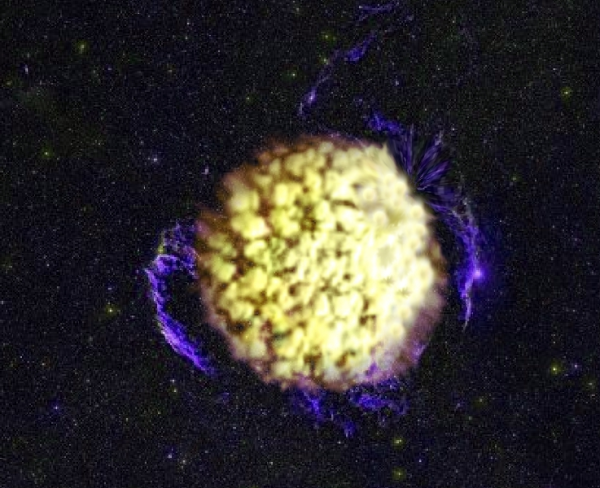BY LETTER
Supernova Remnant
 Image from Steve Bowers | |
| The Muora Supernova Remnant, formed from the explosion of a Wolf-Rayet star in 8684 AT | |
Where several supernovae occur in the same cluster, shockwaves and light pressure can cause nearby supernova remnant clouds to compress and collapse under their own gravity, causing new stars and planets to be formed from the debris. As the galaxy gets older, the metallicity of these star-forming clouds gradually increase, and so newly formed stars in the present era are more metal-rich than older stars that were formed in the galaxy's youth.
 Image from Steve Bowers | |
| The Vela Supernova Remnant, an older remnant cloud which formed about 10,000 years BT. | |
Related Articles
- Black Hole
- Bubble (astronomy) - Text by M. Alan Kazlev
A roughly spheroidal shell of interstellar gas blown outward from a star by a stellar explosion or strong stellar wind. Large bubbles are caused by supernova explosions and contain gas that is much hotter but also much more diffuse (about one atom per cubic cm) than that of the surrunding interstellar medium. These are also called loops. - Bubble (galactography)
- Geminga
- Gum Nebula
- Local Bubble - Text by M. Alan Kazlev
"Low density" plasma region of space left by former supernova some tens of millions of year ago. Approximately equivalent to the Inner Sphere. - Magnetar
- Muora
- Neutron Star
- Pulsar
- Supernova
- Vela Supernova Remnant
Appears in Topics
Development Notes
Text by M. Alan Kazlev
Initially published on 31 December 2001.
Initially published on 31 December 2001.






